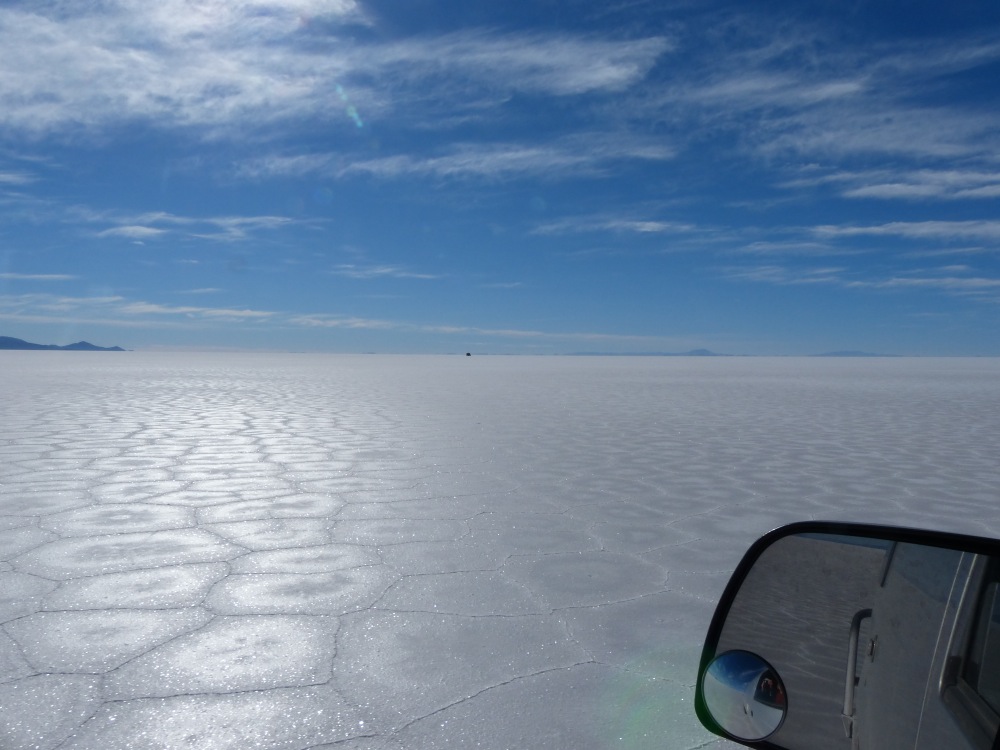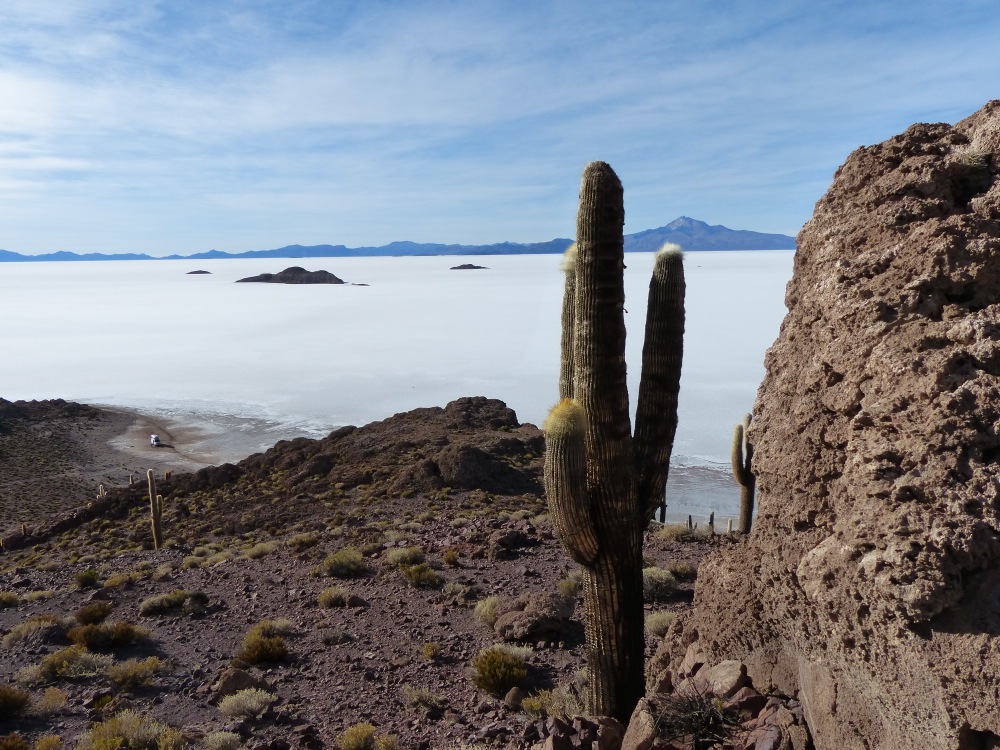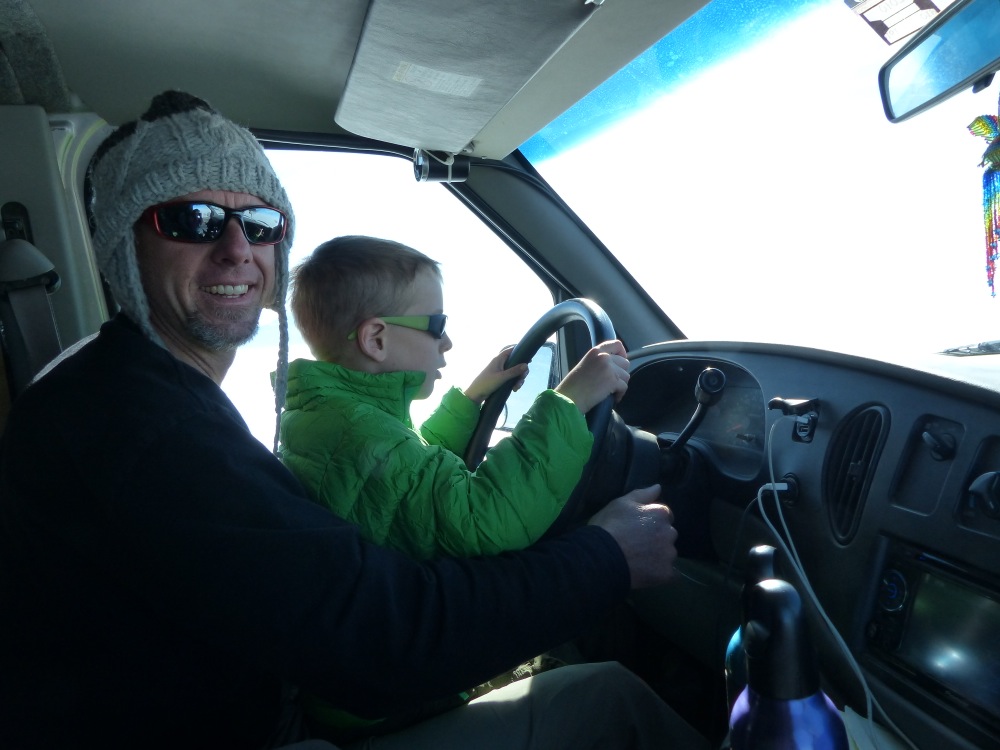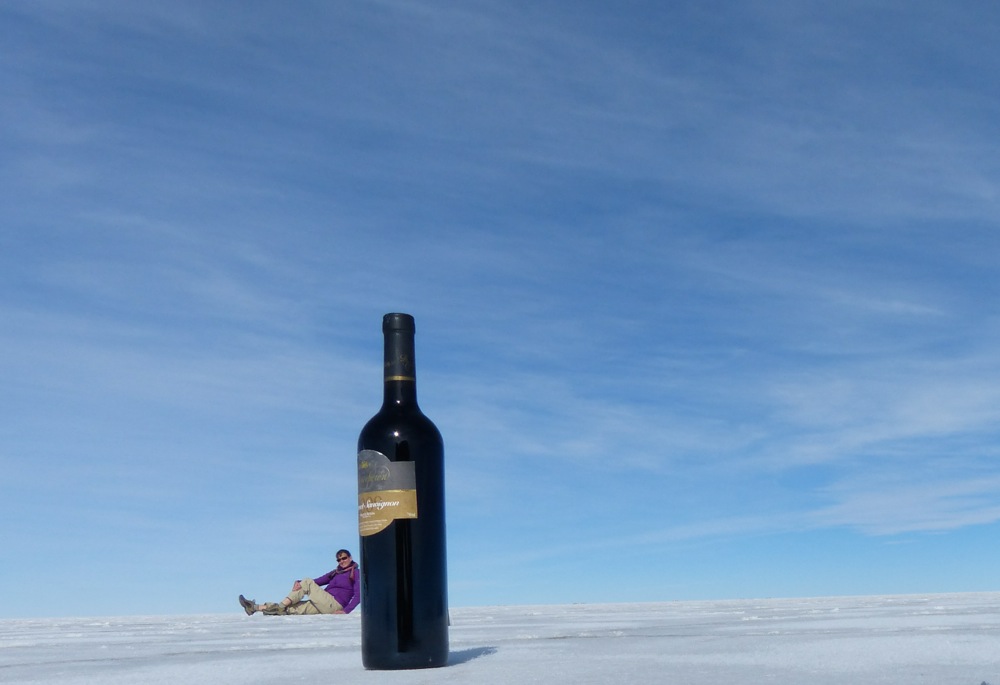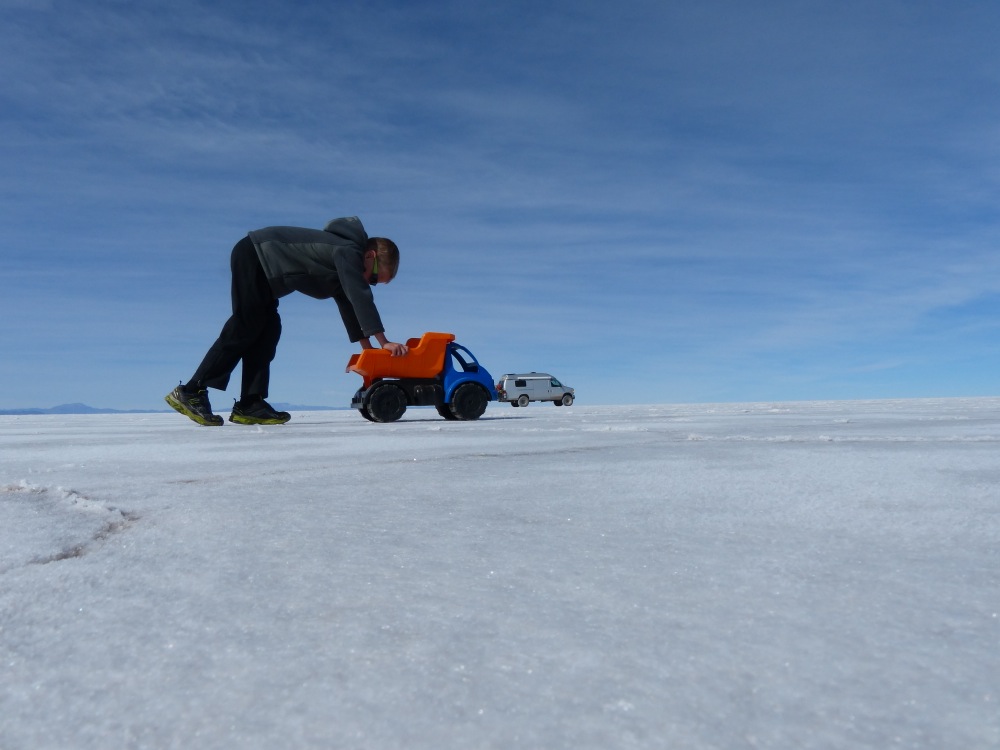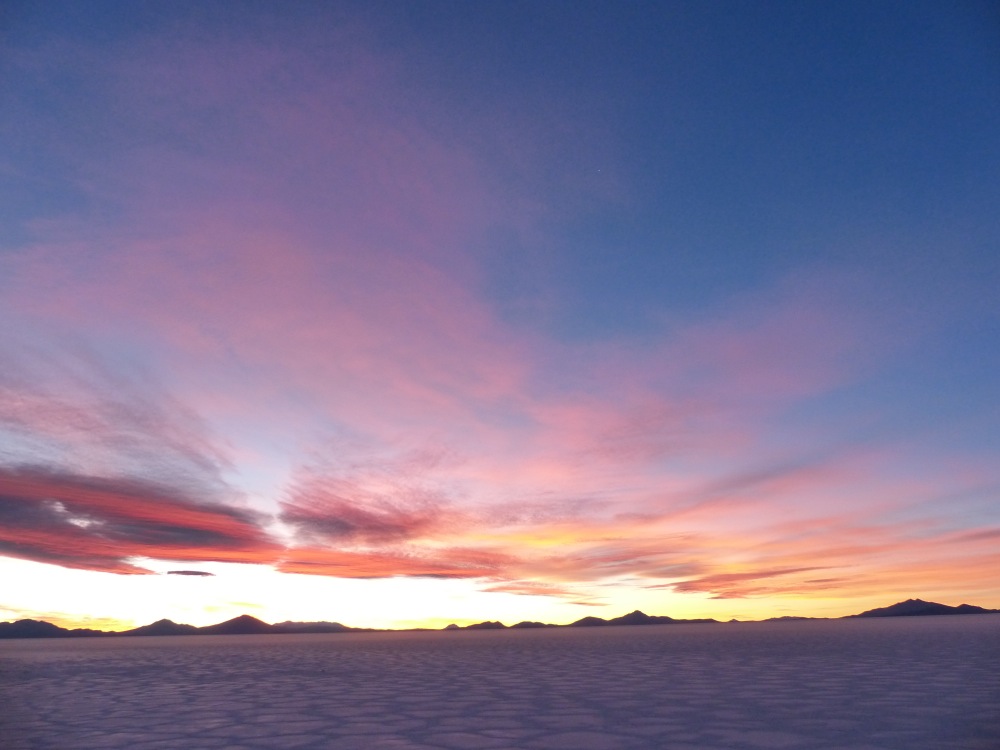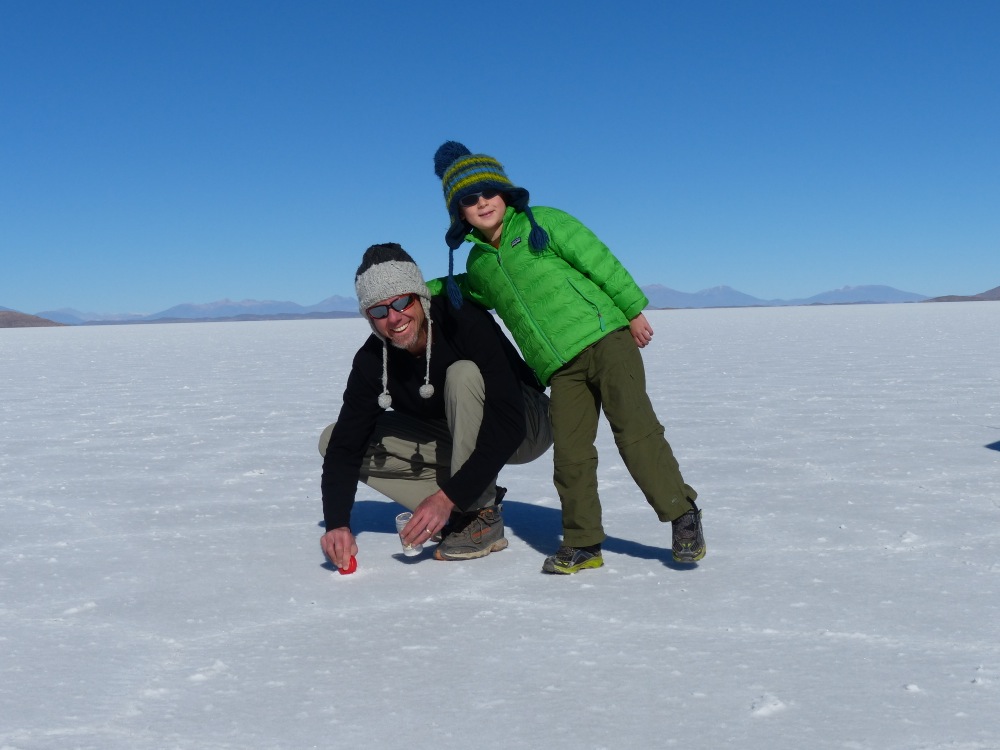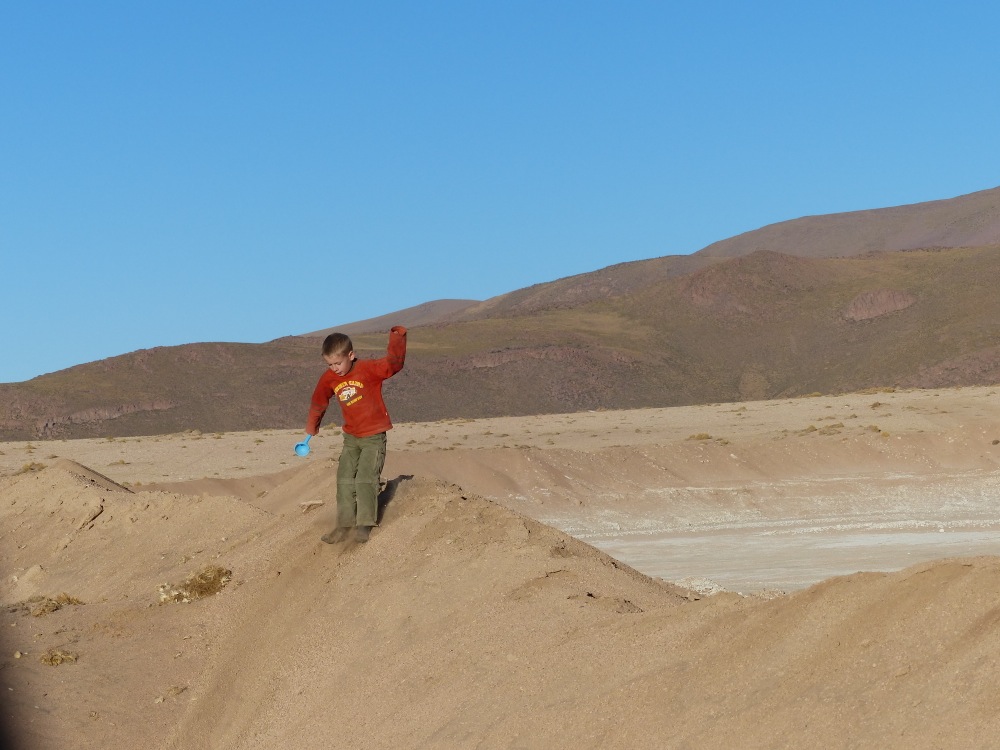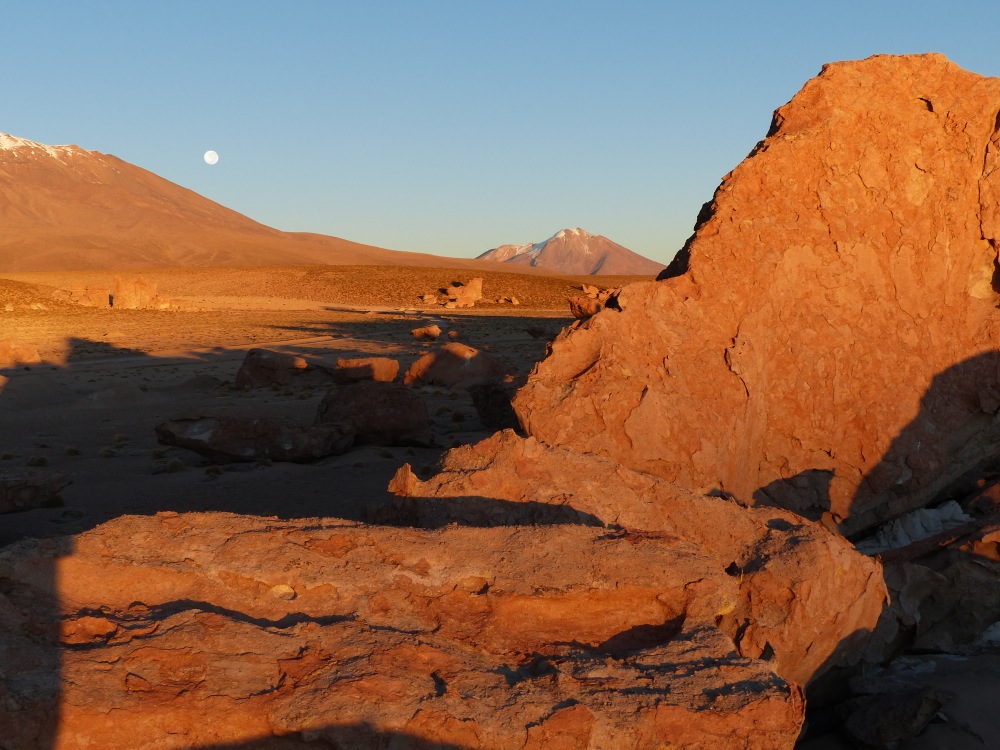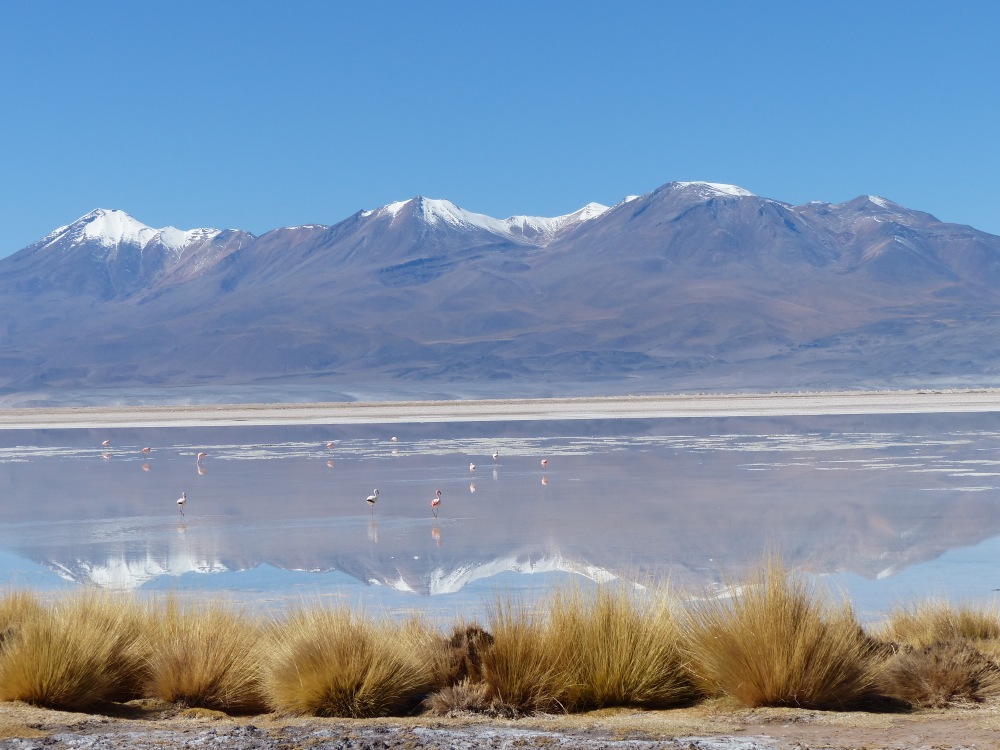After our last post, we had some friends ask why we made the decision to drive directly from Peru to Chile instead of taking the more-commonly taken route via Cuzco and Lake Titicaca into Bolivia before entering Chile.
It is a very good question.
The answer is that we are fortunate to have visited many tourist highlights during a previous visit to Peru and Bolivia — including a fantastic hike of the Inca Trail to Machu Picchu, an excellent jungle trip to Manu National Park, an overland trip to La Paz, Bolivia, via Lake Titicaca (where we visited the towns of Puno and Copacabana and the Isla del Sol), a multi-day trek in Bolivia’s Cordillera Real and a mountain-biking trip down the Yungas (“Death”) Road.
As you might imagine we enjoyed these experiences very much, and we want to add to them by seeing different places on this trip than we’ve seen before.
Thus it seems that for this stretch we find ourselves on the road less traveled.
The border crossing between Peru and Chile was one of the easiest we’ve done. With friendly staff to help guide us to the various offices, the whole thing took less than two hours which is probably a record for us.
Chile is known for being very strict in not allowing fresh foods into their country, and since we were prepared for this it wasn’t a big deal. We handed over half a lime, some rotting bananas, and an avocado that had refused to ripen anyway. They actually didn’t even ask to look in the fridge. We have heard, though, that the officials get more aggressive in looking for culinary contraband at smaller borders.
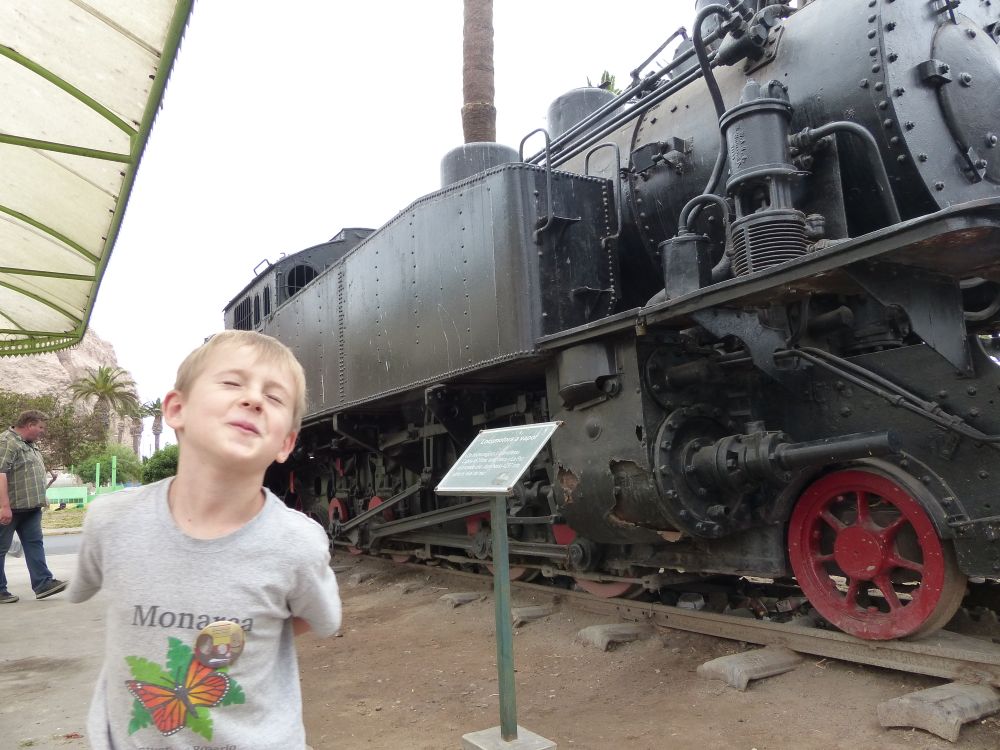
Quinn checks out the steam engine imported from Germany in 1924 in the town of Arica.
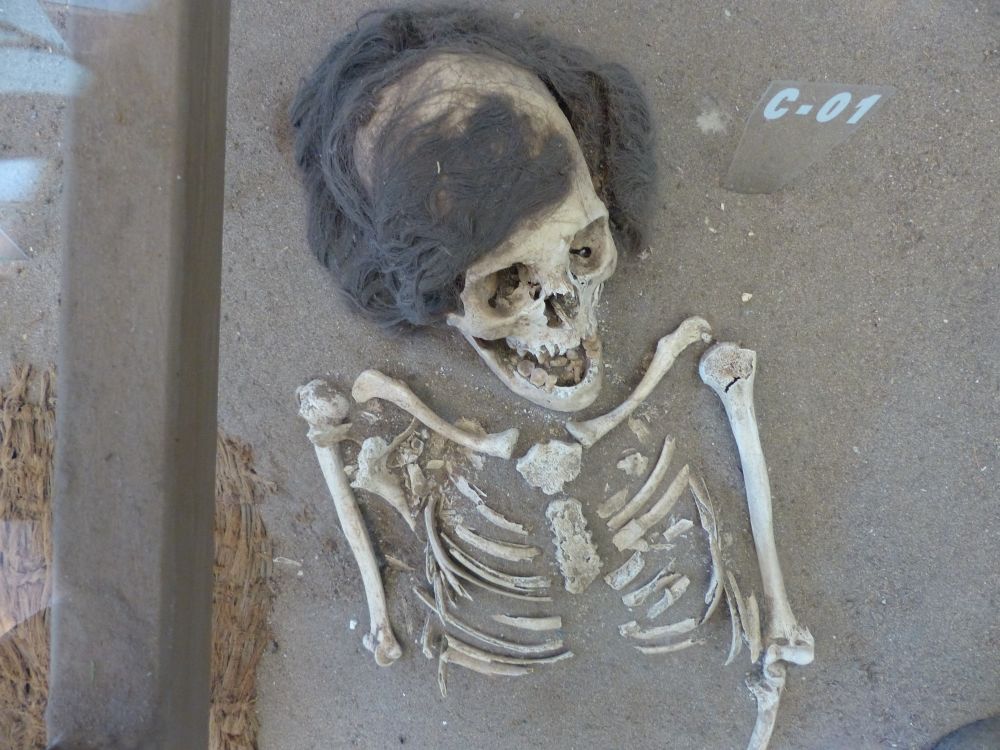
Arica is home to a museum that was built on top of a pre-Incan burial site discovered during the construction of a hotel. The bodies are still in their original position, and a glass floor was built over them to provide a great view.
Outside of town, we visited another museum that housed the world’s oldest mummies dating from as far back as 7000BC.
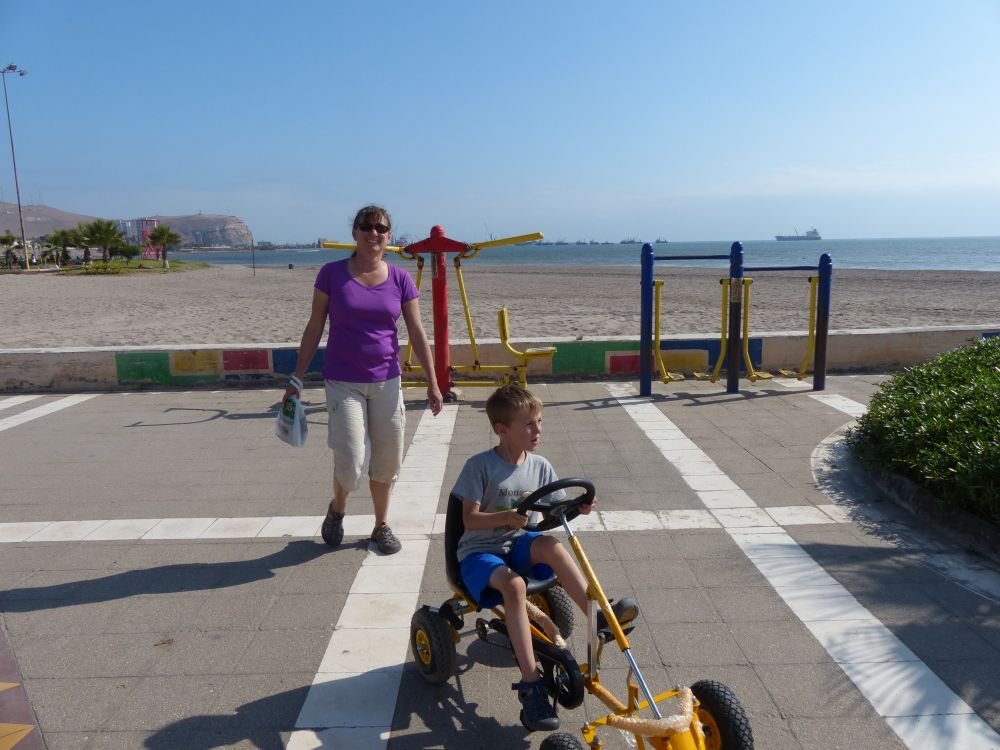
We didn’t spend all of our time at museums. Arica had great waterfront park and walkway featuring lots of fun stuff for kids.
From Arica we had a decision to make. We were ultimately headed for Sucre in Bolivia, but the question was how to get there. The shorter route, all on paved roads, or the longer route taking in two national parks high in the Andes but requiring 100-plus miles of unpaved roads in unknown condition. As you might guess from the fact that I’m even talking about it, we chose the latter.
That meant we would go south by another 200 miles to Iquique before turning east and heading into the mountains. Although it’s a major seaport in Northern Chile, Iquique’s history as port city for the former mining operations in the area gave it a certain charm. That combined with a campground with nice showers led us to stay an extra day.
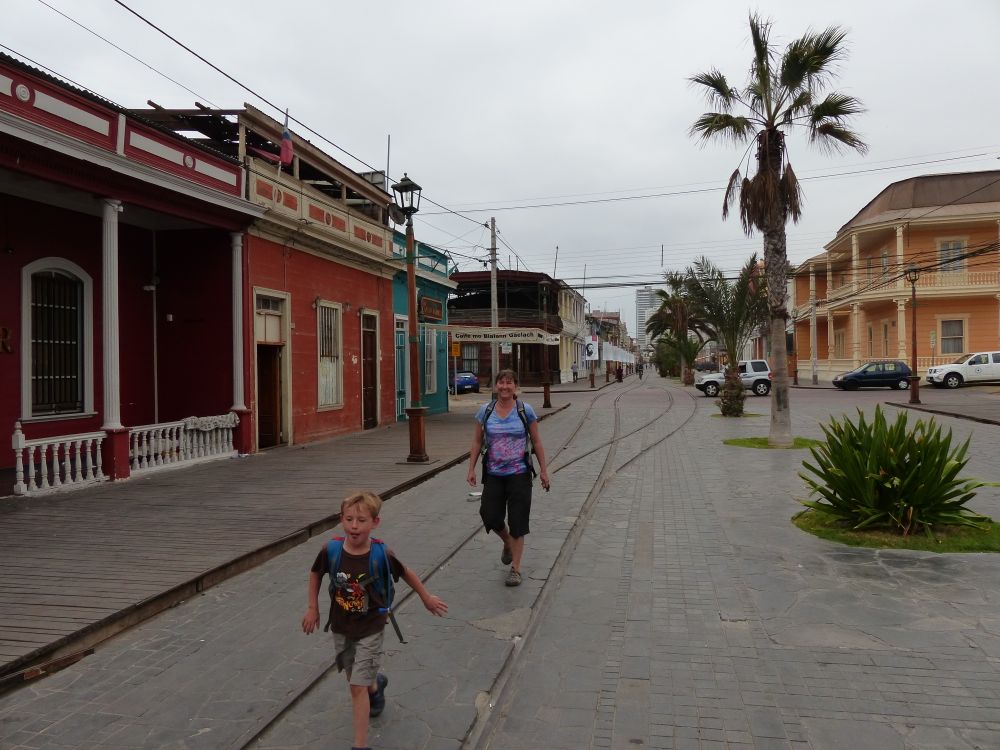
Iquique’s downtown area, featuring trolley tracks and wooden sidewalks, reminded us of an old West town.
One of the reasons we chose the longer route was that it also gave us the opportunity to visit the ghost town of Humberstone. The town was the site of saltpeter mine that operated from 1876 until about 1930. It was fascinating, and we spent a few hours wandering around looking at people’s houses, community buildings, and the industrial mining works.
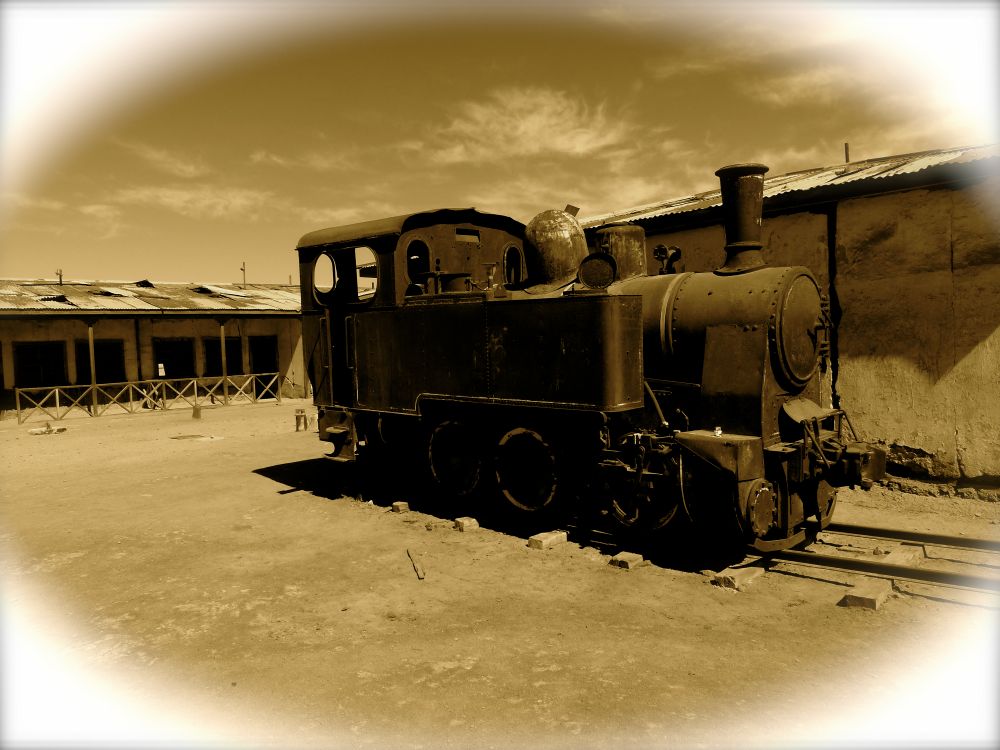
The various old locomotives rusting away in the desert were a highlight of the visit.
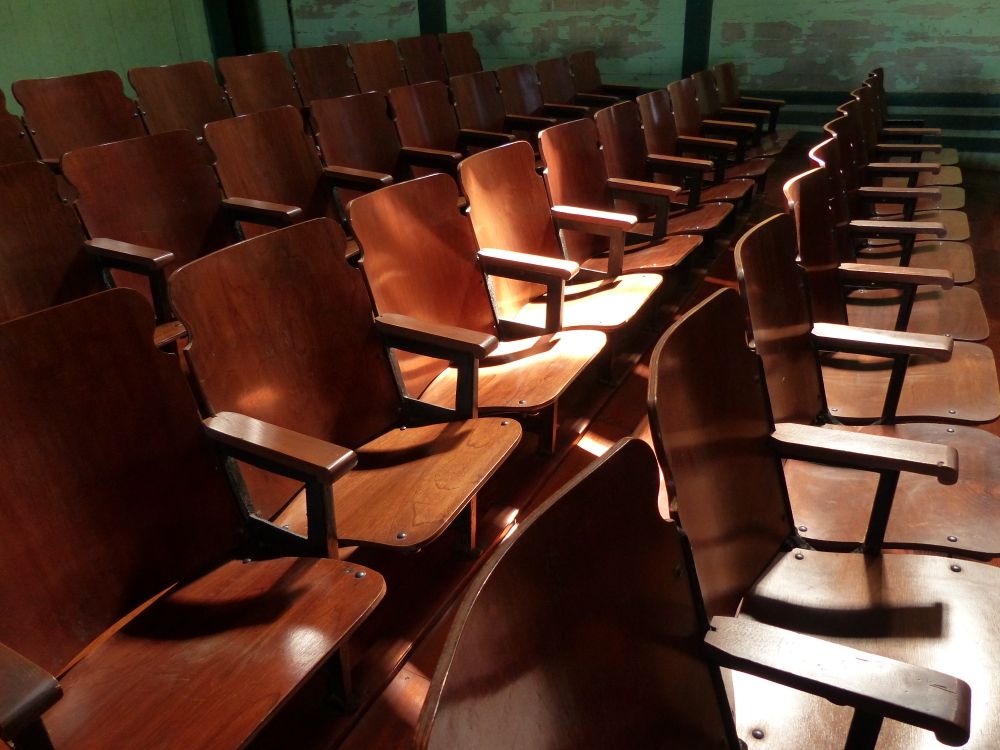
The old theater still had its seating and stage.
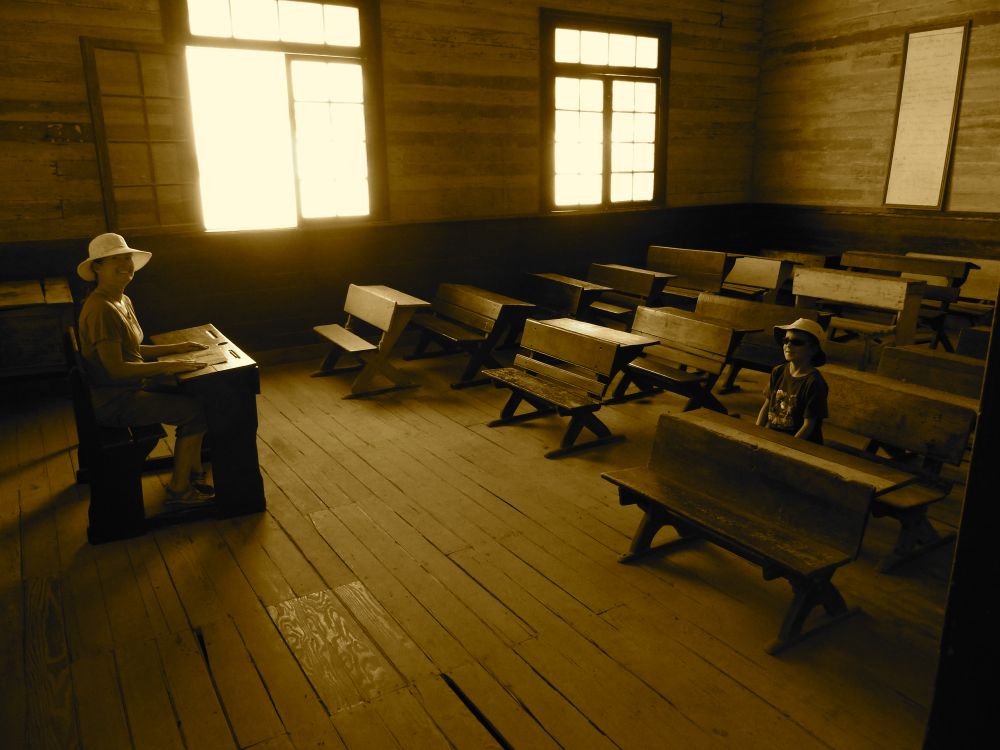
Teacher and student in the town’s school house.
We left Humberstone after lunch and headed into the Andes to the town of Colchane. Colchane lies at over 12,000 feet, and coming from sea level we had wanted to do an acclimatization stop somewhere on the way. It didn’t work out though, and Jen and I both had trouble sleeping the first couple of nights that we spent at high altitude.
In Colchane we planned to fuel up for a 100-mile trip through the backcountry along the Bolivian border. Unfortunately we discovered that Colchane doesn’t have a gas station. We asked around, and at first we thought we were going to have to cross into Bolivia for fuel, then come back to Chile. That would have taken at least a day, so we were glad we found out that one of the local stores sold fuel out of jerry cans.
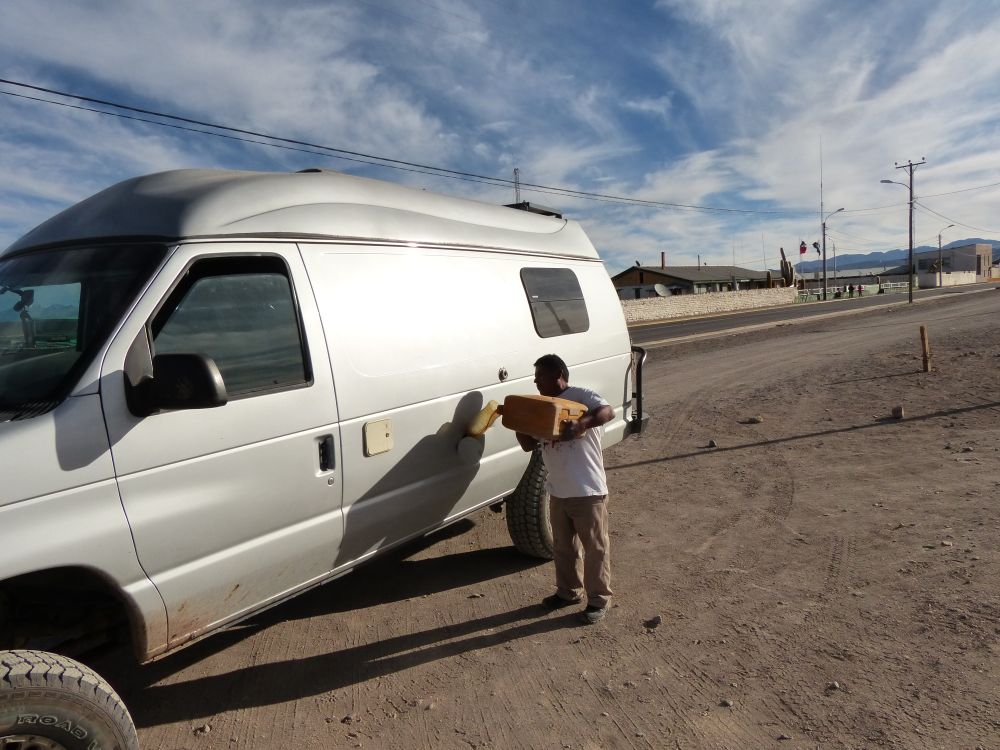
Hope that stuff is clean! I was happy that I had taken the time to replace the fuel filter in Arequipa.
From Colchane, our route would take us North through Parque Nacional Volcán Isluga, then past the Salar de Surire, through the Reserva Natural Las Vicuńas, and finally into Parque Nacional Lauca before depositing us on Chile 11 near the Bolivian border. As it turned out we would cross briefly into Bolivia inside one of the parks. Our GPS map showed us in Chile the whole time, but we passed through an opening in a barbed wire fence and a rusty old sign that said “Bolivia.” No matter; there was no one there to check our passports.
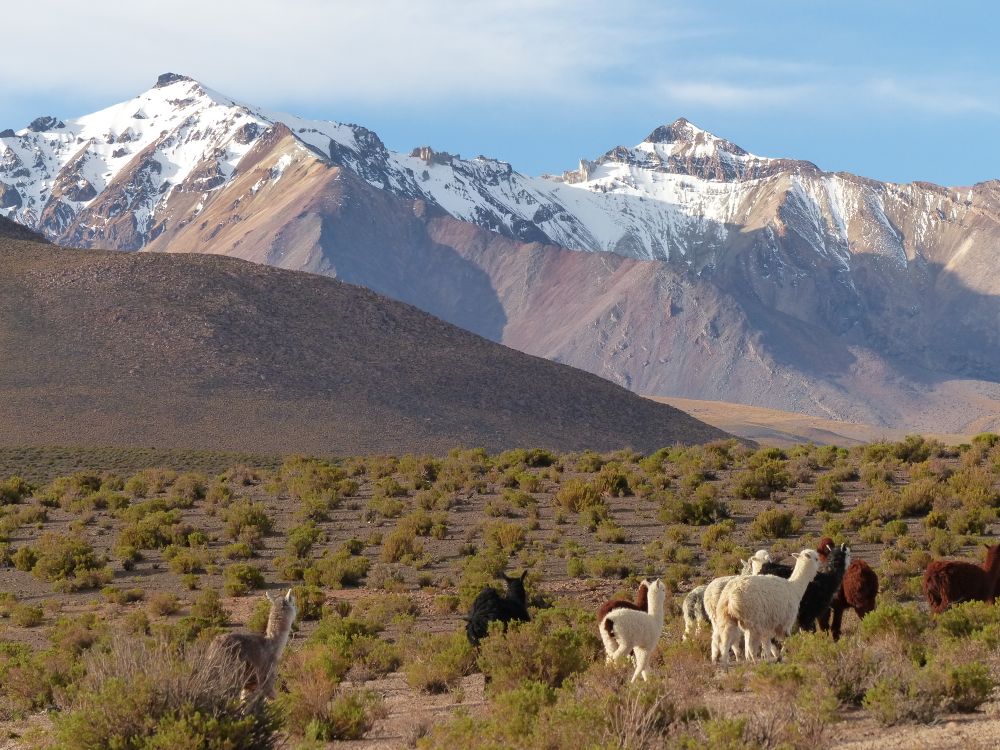
Alpacas and snow capped peaks. Can it get more Andean?
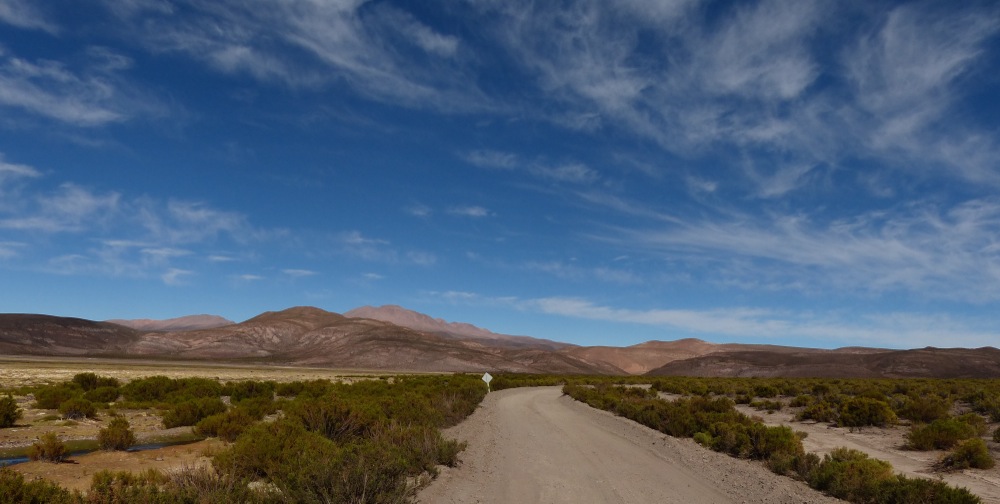
The whole area reminded me of Montana’s tagline – big skies.
The first night we camped just inside the first park at a hot spring that wasn’t really warm enough to want to get into. There we met a group of four friends traveling in a new Mercedes SUV. The car had hand controls and the driver was in a wheelchair.

We saw a few Rheas, which looked like a smaller version of an ostrich.
The next day we stopped for lunch at another hot spring in the Salar de Surire. This one was hot enough, but at around 14,000 feet the wind was cold.
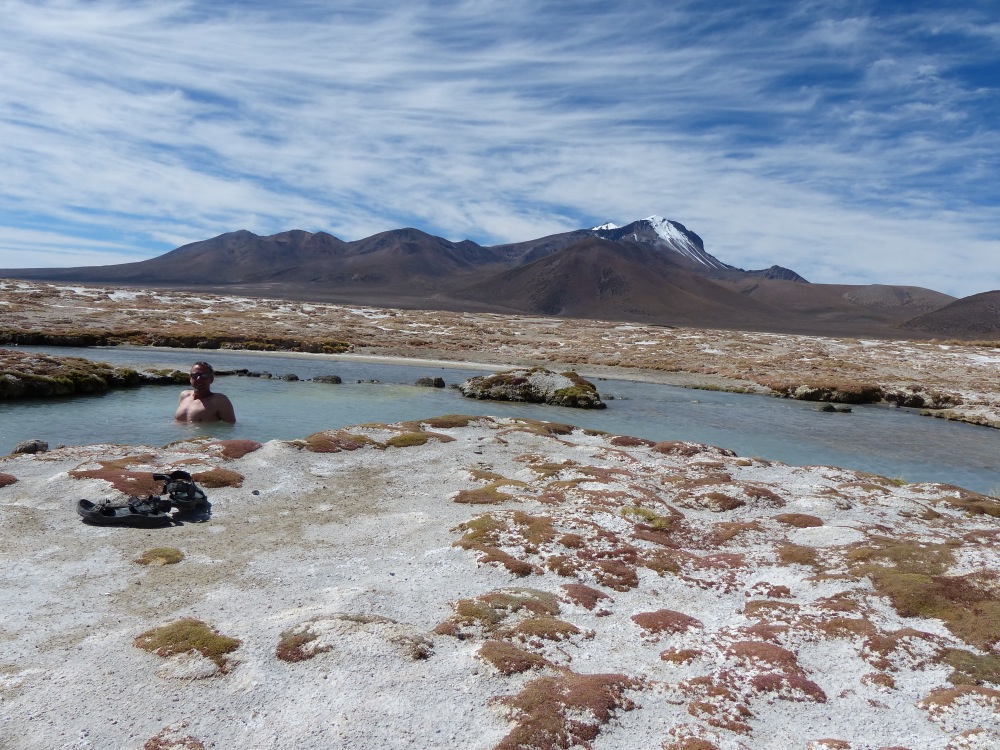
It was comfortable enough in the water, but getting out was breathtaking.
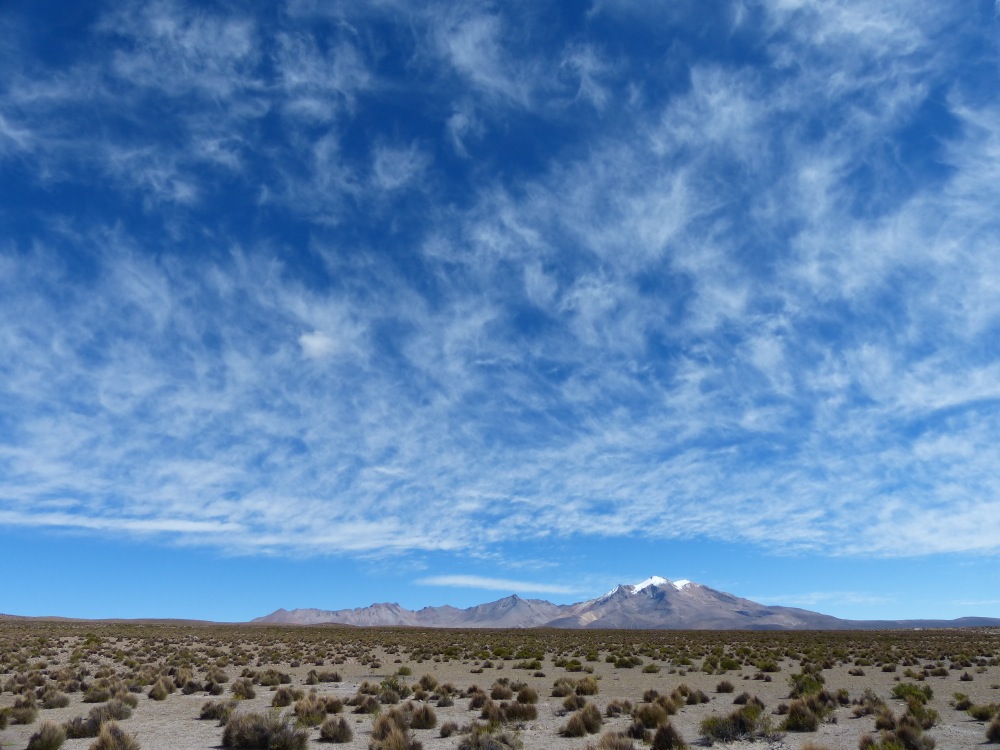
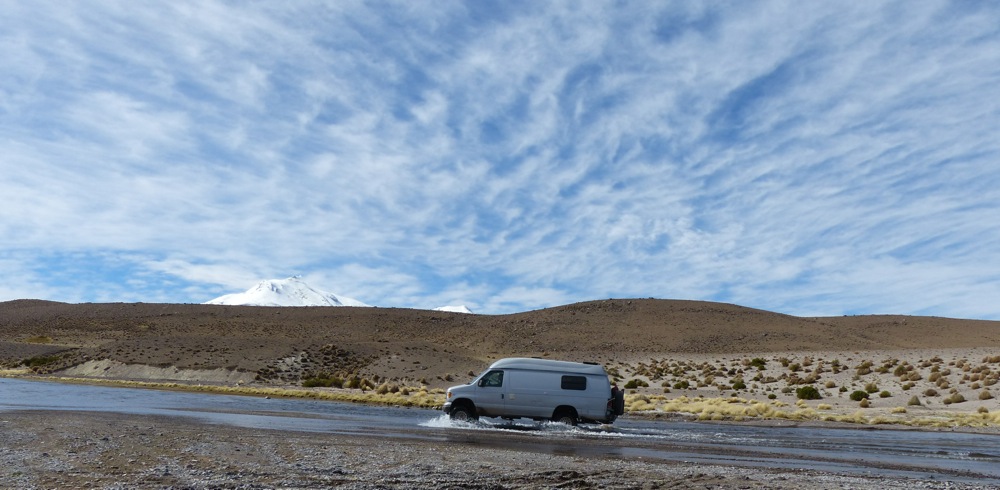
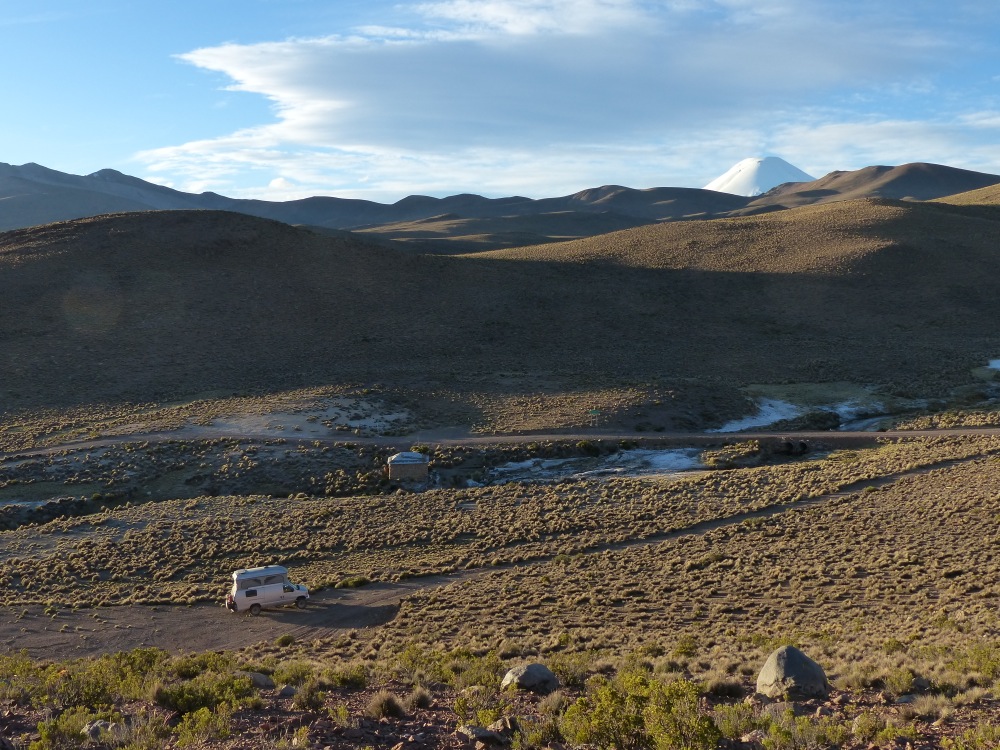
We camped at another hot spring our second night.
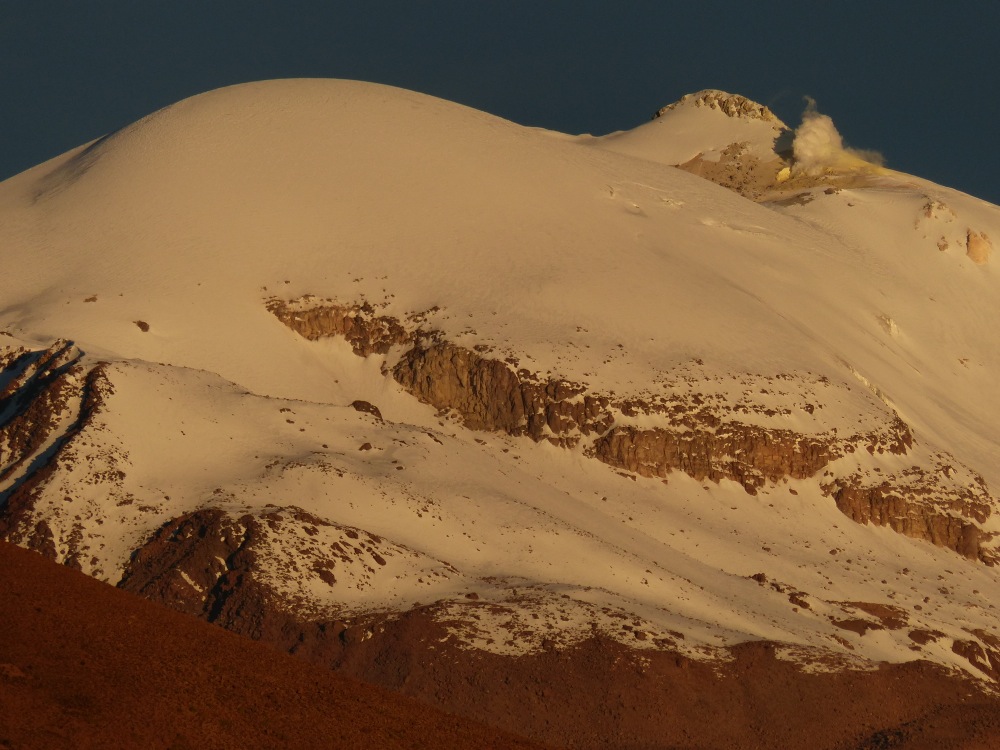
Our campsite was at nearly 15,000 feet, and climbing up a small hill for sunset photos left me panting. But I did get a shot of the smoking volcano that we had been driving toward all day.
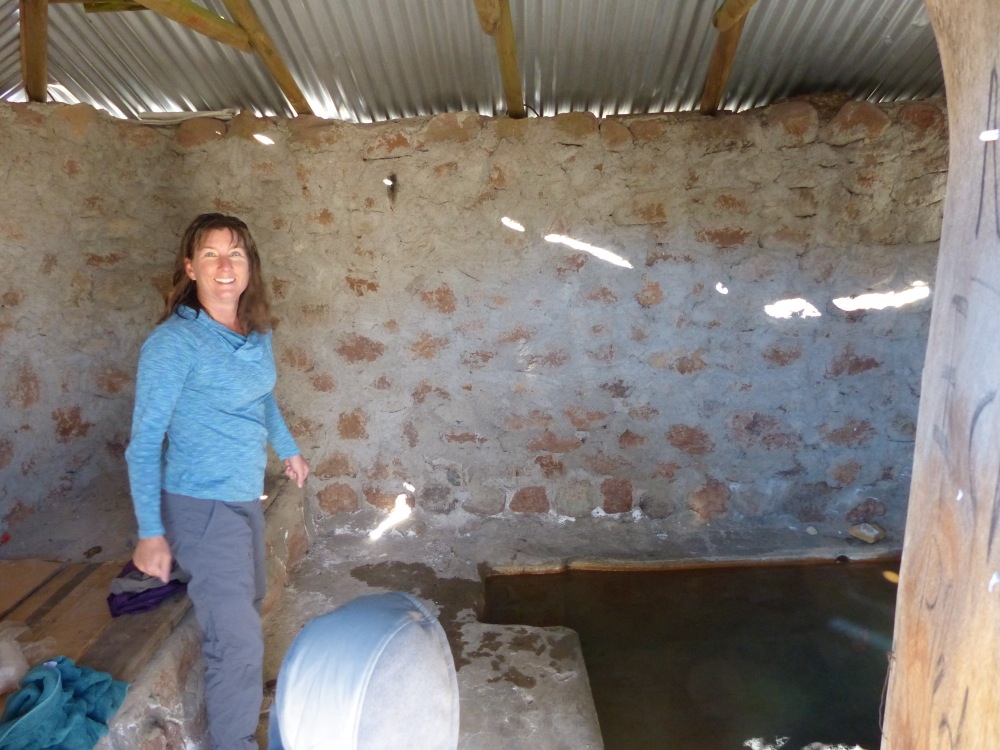
The hot spring has an enclosed bath house to keep out the wind. The water temperature was perfect and we took the opportunity to clean up a bit.
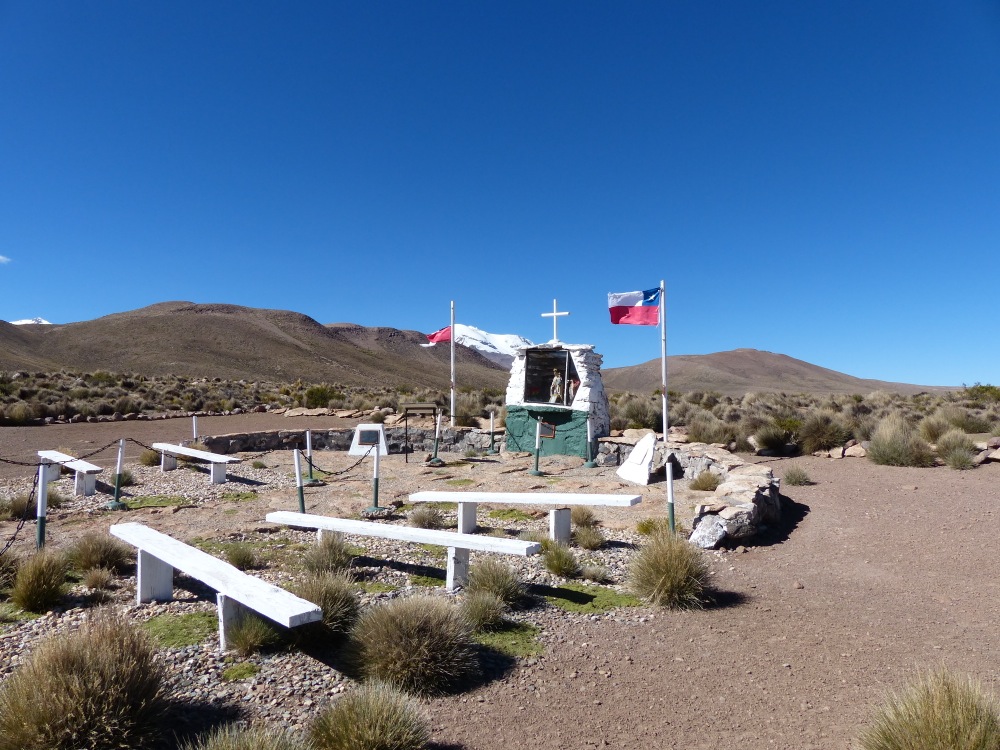
The next day we came across this outdoor chapel. Stunning scenery, but attending Mass here would be a cold experience.
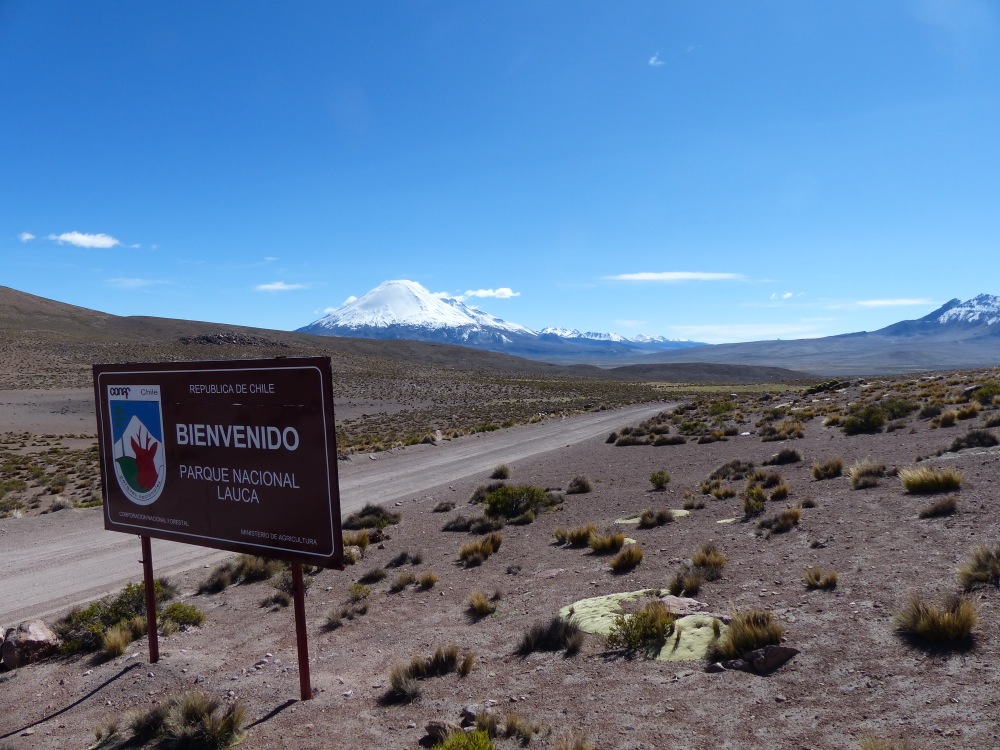
Entering the final park along the route.
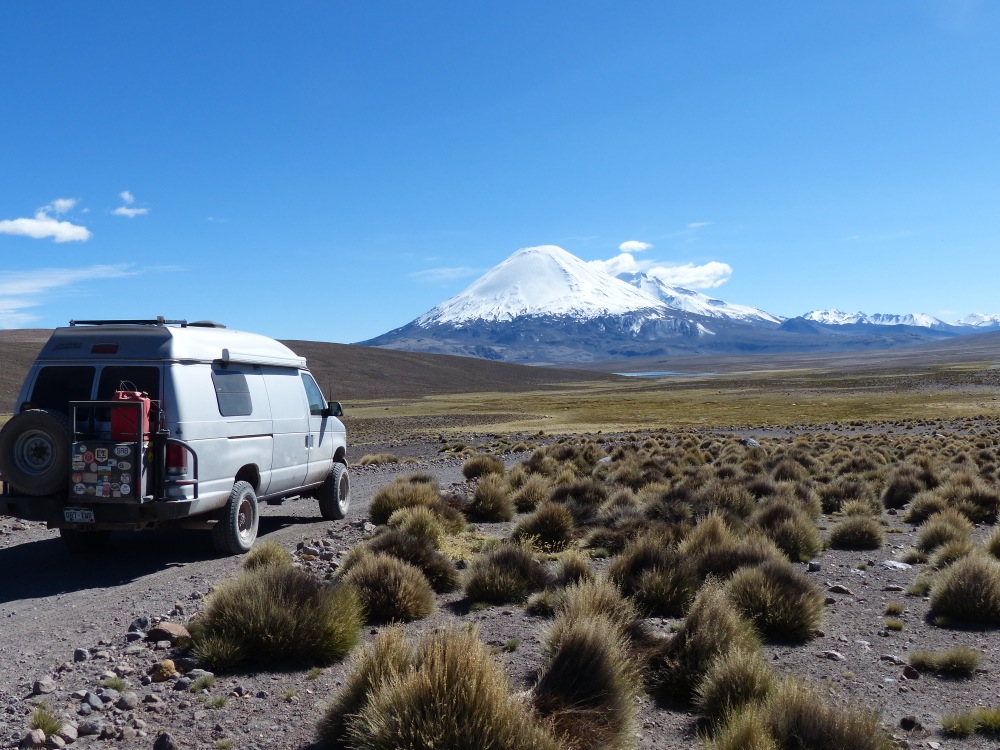
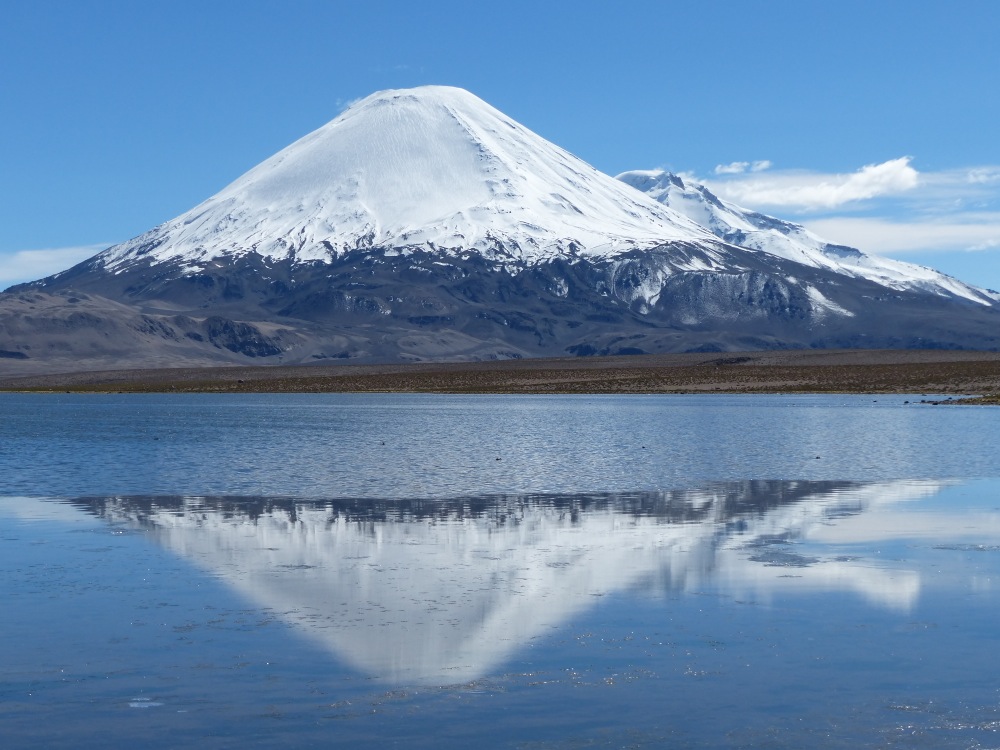
This picture is taken from the main road in the no-man’s land between the Chilean and Bolivian border posts.
If you’re thinking about doing this trip, the 100-mile drive from Colchane to Chile 11 near Putre took us less than 10 hours driving time including numerous photo stops. South of Salar de Surire the roads are slower and sometimes corrugated; north of the Salar the roads are faster.
We could have done the whole trip in two-wheel drive, although along portions of the road to the south of the Salar decent ground clearance would be advisable. Apparently during the rainy season these roads can become impassible.
As I mentioned there is no gas station in Colchane. The guy who sold us diesel also had gasoline available when we were there. The closest gas station in Chile is along the Pan-Am in the town of Pozo-Almonte. Once you reach Chile 11 on the northern end of the route, fuel is available shortly after crossing into Bolivia, or (presumably) in Putre on the Chilean side.
